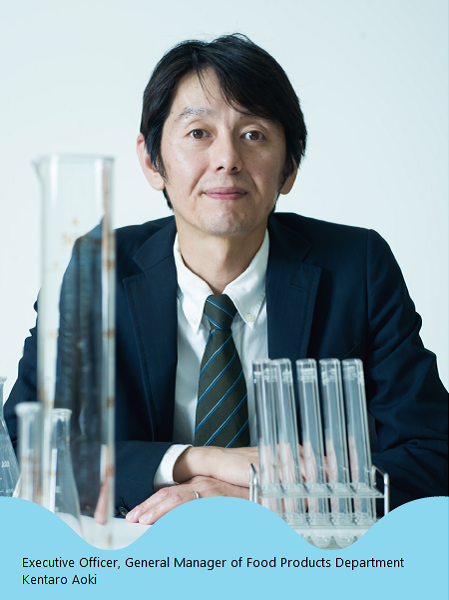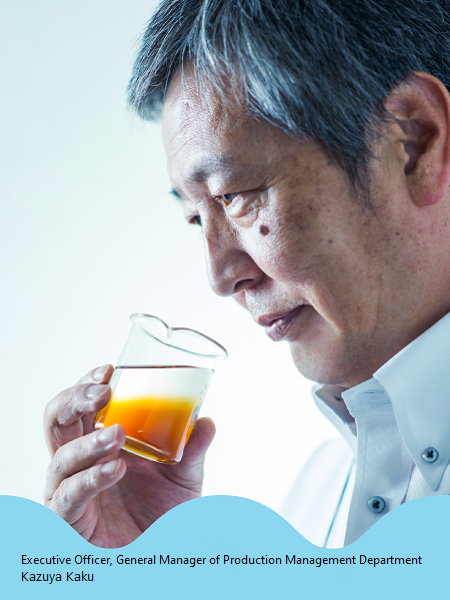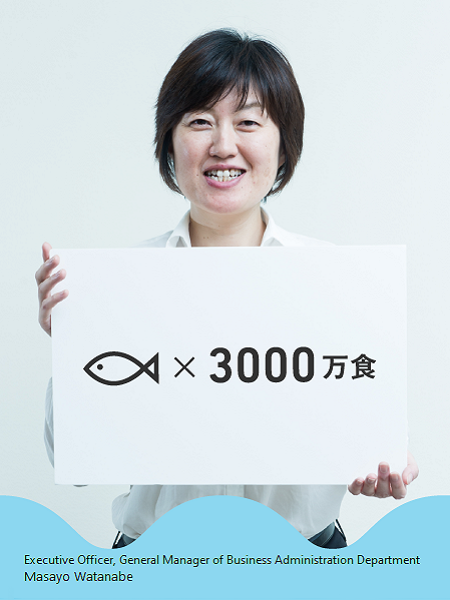
The rich “umami taste” from the blessings of nature.
We extract it only with the basic seasonings.
We master it.
Even broth is just an aid.
We aim for cooking not only by processing but also by starting with “subtraction.”
Every ingredient of blessings of nature has its own umami taste.
The basic seasonings that are common in every household, such as salt, sugar, miso, soy sauce, and sake, can bring out the full deliciousness of ingredients if we make use of the wisdom of our ancestors.
With professional skills that have been inherited, we pre-treat ingredients to remove the excess.
This allows the suppression of the smell and the harsh taste which hinder the deliciousness.
As a result, it will be the best way to facilitate the penetration of seasonings.
However, in the world of commercial foods, many seasonings are often used for some reasons, and foods will literally become “processed foods.”
Although the first bite may be delicious, we get tired of the flavor because the flavor elements are packed into the food for the first taste.
The original umami taste of ingredients appears in the aftertaste, but our tongue gets tired before reaching it.
On the backside of commercial food packaging, there is a label collectively displaying unfamiliar substance names.
This is not only a health concern but also a factor for a mysterious phenomenon in which different ingredients provide the same taste.
Therefore, we try to avoid adding auxiliary materials as much as possible.
For example, we have introduced “Yuburi,” a technique of Japanese-style restaurants, to the production line.
In simmered fish dishes, there is a professional and traditional Japanese cooking technique to quickly soak the fish meat in hot water to remove the surface oxide and fish-specific smell and scum.
This is “Yuburi,” It is a simple bit of labor, but it was quite a challenge to realize its introduction in mass production at the factory.
This time, we started with the “subtraction cooking” by passing fish for a short time through a machine that generates high-temperature steam.
The osmotic force of salt and sake allowed the seasoning that makes use of the “umami taste” of the ingredients.
We have received favorable comments from customers, who always cook simmered fish at home, saying, “I thought pouch side dishes were not that tasty, but these are quite good.
” Nowadays, we can enjoy even authentic French cuisines in stand-up restaurants.
It is wonderful time we can eat authentic dishes at reasonable prices.
I would like more people to enjoy the taste that is as good as at first-class restaurants.


Accidental deliciousness cannot be reproduced.
Therefore, we quantify everything and look for deliberate deliciousness.
The glutamic acid and Brix values (sugar content) comprising umami taste are measured numerically.
Consumers will be impressed, saying, “it is delicious.”
It is wonderful, isn’t it? In order to recreate such an impression and to enjoy it along with more people, the basis of the deliciousness must be shown numerically.
For this reason, we quantify everything that can be felt with the tongue.
The taste sensation is very subtle and delicate.
For example, even if we use a kitchen recipe at a factory, the foods will not taste the same.
The center and the edge of a pot differ in how heat is transferred and how seasonings are absorbed.
In addition, there are seasons for fish as an ingredient, e.g. when it is fatty and when it is not.
The ingredients we handle vary every day because they are fresh.
Therefore, the important thing is quantification.
We have been working on it for 15 years.
The system has allowed us to further take on a challenge.
Quantification parameters (measurements) will vary, including the content of amino acids, fat, water, oil, salt, Brix, pH, color, etc.
There are also numerical values to measure hardness and viscosity.
An example is "Norimaki"(Seaweed roll).
Norimaki is delicious because the texture of each ingredient is different.
It does not taste good if it has a single texture.
That is why we quantify even the crispness of cucumbers.
It has been more than 15 years since we started this approach.
We are now able to offer our products with more confidence than when we traveled around the world, including to Alaska, to verify ingredients with our own eyes.
Communication with customers has also become faster.
We now have a system that allows us to quickly take on a challenge to make more delicious products.
I would like to take advantage of my past experience and tackle new genres such as hospital food.


Deliciousness and safety.
Some say this cannot be compromised, while others insist that is more important.
We are proud of our company’s culture of having a confrontational stance.
“The first featured product is sardines simmered with ginger.”
I was appalled by the decision.
I felt like holding my head in my hands for that decision.
What an ambitious high aim! Sardines are perishable.
It is so perishable that its Chinese character* is written as “weak fish”.
I was afraid that its thin and delicate skin would come off if we added the Yuburi process.
Increased losses might possibly put pressure on profits.
Would the factory operation catch up in the first place by using ingredients that require extreme care? I had one anxiety after another.
As such, challenges kept coming.
What overcame these challenges was a high level of broad technical knowledge and the true passion of our fellow workers.
*鰯(Sardines)=魚(fish)+弱(weak)
It is difficult to mass-produce prepared fish dishes.
This is why it is exciting and interesting.
In order to achieve both safety and taste at high levels, each responsible person in charge has his or her own argument.
I can’t recall how many times we had arguments. Many of our factory staff members are really picky. One says he/she likes a little stronger flavor.
Another one says a lighter flavor is better.
Everyone wants to say as much as they want.
Nevertheless, we have a clash of opinions because they are really serious.
No matter how many arguments we had with each other, everyone’s feeling is one, “we want customers to eat delicious fish.”
To be honest, my son does not like fish.
I am aiming for a product that makes my son become fond of fish.
This is my secret goal.


Distribution risks due to bad weather can be anticipated and addressed by paying careful attention.
Products should not be out of stock at stores.
We make preparations by expecting the worst-case scenario.
Take, for example, a fluctuation of sales by annual events.
Since there are seasonal products, such as for Doll festival in spring, field day in autumn, and Setsubun (the traditional end of winter), there are fluctuations also in the amount of raw ingredients to procure.
We need to plan and prepare for big waves of demand.
It is essential to check the inventory every day to keep .





